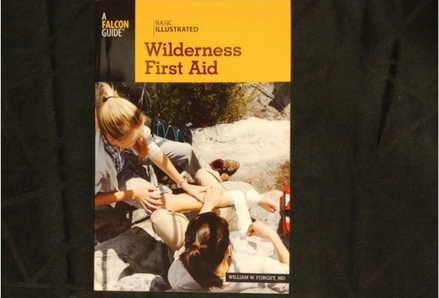This post was written with information from Basic Illustrated Wilderness First Aid, by William W. Forgey, MD. The new edition of this guide includes updated wilderness first aid techniques, photos, and illustrations to help you identify and treat injuries. Easy to read and simple to follow, the book is both an introduction to wilderness first aid and a reference for those with more experience.
A message from Dr. Forgey
It has been my distinct honor and pleasure to work with IAMAT as a volunteer Board member for many years. Early in my travel medicine and wilderness medicine career I realized the importance of access to, and the value of, the IAMAT disease information risk database.
The best approach to safe international travel is an educated traveler, not a misinformed one. I applaud the amazing diligent work that the volunteers and staff of IAMAT have so tirelessly and professionally provided over the past 56 years. I am honored to be a part of this organization and urge each of you reading this to please do your part by joining with your membership contribution.
Urban versus wilderness first aid
Dr. Forgey draws a clear distinction between first aid in an urban area and first aid in the wilderness. In an urban environment, you should first call the local emergency number and then focus on any life-threatening injuries, such as breathing difficulties or blood loss. In remote areas where emergency medical services are far away, first assess your surroundings to make sure that you, the injured person, and other travel companions are safe before treating any injuries.
When you are planning a trip to a remote area, make sure that you are familiar with the climate, local weather patterns, hazards, and terrain. Pack appropriate clothing and first aid supplies for your activities and the duration of the trip.
You don’t have to be very far from an urban area to need wilderness first aid skills, especially if you are travelling in a country where emergency medical services are limited. Your first aid kit should include gloves and eye protection plus bandages, gauze, soap, adhesive tape, moleskin, scissors, tweezers, antibacterial ointment, and a pencil and paper. (See our Guide to Healthy Travel for other items to consider.)
Step 1: The initial survey
Take into account your environment (are there any natural hazards like falling rocks?) and the wellbeing of others travelling with you (is their health at risk from other factors, such as extreme cold or heat?) Once you have determined that everyone is in a safe location, assess the injured person to evaluate their injuries. Wear gloves and eye protection to protect yourself from possible infection from the injured person’s body fluids.
Keep calm and comfort the injured person. Follow the ABCDE rule to assess their condition:
- Airway
- Breathing
- Circulation
- Disability
- Environment
Check the person’s airway for normal breathing, their pulse for circulation, look and feel around their body for blood loss (including sliding your hands under the person if they are lying on the ground), and note (but don’t touch) any potential head or neck injuries, especially in the case of a fall.
When you’re planning a trip to a remote area in another country, it’s a good idea to have evacuation insurance. Double-check that the policy covers the area that you’re visiting. Be aware that in some circumstances, the nearest hospital may be in a neighbouring country.
First aid for hypothermia
One serious problem for outdoor enthusiasts is hypothermia. Here is a short excerpt on the topic from Basic Illustrated Wilderness First Aid, p.65:
Hypothermia can occur quickly when exposed to cold water (acute hypothermia) or more slowly from cold-weather exposure (chronic hypothermia). Hypothermia is the most likely of the environmental injuries encountered in the outdoors. Most chronic hypothermia deaths occur when the outside temperature is between 30°F (-1°C) and 50°F (10°C).
It can be difficult to take an accurate temperature outdoors, especially when it’s cold. You should suspect hypothermia if someone who is cold starts to fumble with complex tasks, can’t speak or think clearly, or can’t walk in a straight line. You should also suspect hypothermia if the person has been in cold water for longer than 20 minutes. Hypothermia can develop quickly in people who are very tired.
A shivering person will warm up from the inside. Do not try to rewarm a shivering person with heat packs or by rubbing their skin – this can make them stop shivering and slow rewarming. Make sure they are wearing warm, dry clothes and are in a warm, sheltered area. Give them food and something warm to drink. If they are not exhausted, allowing them to walk slowly will also help warm them.
If someone shows signs of hypothermia but isn’t shivering, they can’t be rewarmed in the field and should be evacuated immediately. Keep them warm until evacuation by fully enclosing them and two rescuers in two zipped-together sleeping bags.
To prevent hypothermia, follow the COLD acronym:
- Wear clean clothing
- Avoid overheating
- Keep clothing loose
- Stay dry
Being prepared is key to preventing and managing injuries!
Dr. Forgey is a member of IAMAT’s Board of Directors and IAMAT’s Medical Advisory Board. He is Past President of the Wilderness Medical Society and holds a Certificate in Travel Health from the International Society of Travel Medicine (ISTM). You can find Basic Illustrated Wilderness First Aid on Amazon.



